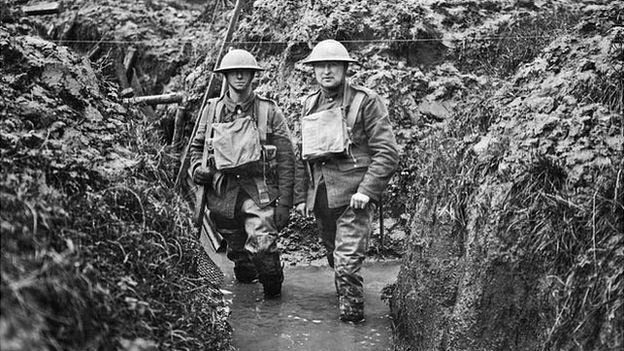The Great War is often remembered for its modern tactics, including aerial combat, but mostly trench warfare. The need for entrenched positions arose from enhanced firepower and a lack of mobility in the face of modern weapons technology. To survive the lethal capabilities of artillery and small arms, both sides dug elaborate systems of defensive positions. During the Great War, trenches were a minimum depth of 8 feet, this allowed men to walk fully erect and be out of sight. The Great War witnessed more and more complicated systems of open trenches and tunnel complexes, avoiding straight lines. Most sections of trench were dug in a zigzag configuration, with only minimal runs of consecutively oriented corridors. This technique minimized blast waves and shrapnel damage from mortars and grenades, while also cordoning off areas should the enemy overrun the defenses. Trenches offered fairly effective protection from enemy fire, and allowed defenders to hold lines for months, sometimes even years. Although they offered shelter from enemy fire, trenches were far from an ideal place. Prone to flooding, often mired with thick, all-engulfing mud, and blighted with vermin infestations, some sections of entrenched positions became a living nightmare. Finally, soldiers dreaded “going over the top”, the preferred tactical method of literally storming over the top a trench line to charge the enemy position. Although the trenches of the Great War are often discussed as symbols of inactivity and stagnation, for the soldiers that served in them, they were testimony to the destruction that is modern warfare.
By Micheal Williams
For further reading/Sources:
Ellis, John. Eye-Deep in Hell: Trench Warfare in World War 1. Baltimore: Maryland, Johns Hopkins University Press. 1989
Bull, Stephen. Trench: A History of Trench Warfare on the Western Front. Oxford: U.K., Osprey Publishing, 2014
Mayoralis, Antonio. The Trench Warfare on the Western Front: 1914-1918. Cedar Park: Texas, Andrea Press Publishing, 2010
Wadsworth, Jacqueline. Letters From the Trenches: The First World War by Those Who Were There. Brensley: U.K. Pen and Sword Press, 2015
http://www.bbc.co.uk/schools/0/ww1/25626530
